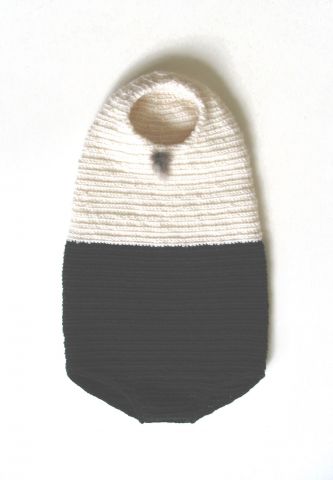If truth be told, it’s quite a task not to dwell on what I can’t do. There’s a daily list of what draws me/needs to be done/requires urgent attention and choices need to be made, not only in art-related matters. Last Thursday I would have liked to go to a talk by Fiona MacDonald at ZAP, but as my magic carpet needs mending it was time for an experiment.
I’m not a great tweeter (can’t keep up and my ability to small-talk has shrunk considerably from not very to hardly at all), but now I wanted to see if it would allow me to link into the event. Rosalind Davis, one of the two organizers of Zeitgeist Art Projects’ SHOW & TELL 2012, was going to tweet live-snippets and the occasional photograph. As I would have done if I’d gone I perused FMD’s website beforehand, to get a sense of her work (enjoyed that, very interesting!), think of questions to ask. When Rosalind’s first tweet arrived (I typed in ‘treat’!), I was ready, heart beating.
The talk seemed to move fast from FMD’s artwork (about which I had questions) to her work at Standpoint Gallery. It was hard to get a sense of where the conversation was going and I wasn’t sure when to cut in so sent query to Rosalind who replied ‘send now’. Yeah! An edited version of FMD’s answer came with a bit of a time-delay and obviously was very brief, if tantalizingly engaging. Left me wanting more, but this wasn’t a one-to-one conversation and I was aware of Rosalind-exemplary-multi-tasker listening, synopsing, tweeting, reading, having an eye on the whole thing, and held back.
Lots of waiting times – made notes for this post. Three minutes between tweets felt o.k., five minutes and more – frustration! About an hour into the talk Rosalind officially invited questions from tweeters (there was another one) and I sent one I’d prepared earlier (it took a little while to get them to fit within 140 letters – editing skills!) and then – – – . What was going on? Waited for 15 minutes before I tweeted ‘is it over?’ After 27 minutes I sent a goodbye-tweet, switched the computer off and lay down in front of the tele.
As I’m looking for ways of connecting to the artworld while I’m pretty much housebound I’d been quite excited about this, but the fact that the Wi-Fi connection went down made me finish this experiment somewhat disgruntled, as it left me completely out of the loop. I found Rosalind’s answer/apologies next morning. Reading back through her tweets I see that she did a great job – and it must have been a really good talk! But does Twitter make for an effective, active inclusion zone?
Tentative facit: Definitely better than nothing, but lonely, fitful and fragmentary, not much control… Did it in the end really feel like participating in something? Not sure. Nothing can really replace direct contact. And of course you also miss out on the chance to meet the other artists in the audience, chat, over a glass of something. But while I can’t be there, and there must be others who can’t, for reasons of ill-health, as in my case, and more besides, I temporarily felt part of something.
If you’d like to read bits of the conversation have a look at the image on My art grows around me.



